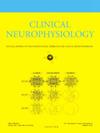基于脑电图的传感运动神经反馈用于儿童和成人的运动神经康复:范围综述
IF 3.7
3区 医学
Q1 CLINICAL NEUROLOGY
引用次数: 0
摘要
针对肌张力障碍和肌张力障碍/运动障碍型脑瘫儿童和青少年的治疗干预措施十分有限。基于脑电图的神经反馈正逐渐成为一种神经康复工具。这篇范围界定综述描绘了在成人和儿童神经运动障碍患者中开展的基于脑电图的传感运动神经反馈研究,包括增强策略。方法:检索了截至 2023 年的 Medline、CINAHL 和 Web of Science 数据库中的相关研究。结果 在 4380 项已确定的研究中,有 133 项被纳入,其中仅有 3 项纳入了儿童。最常见的诊断是成人中风(77%)。范例大多涉及上肢运动想象或运动尝试。常见的神经反馈模式包括视觉、触觉和/或电刺激。脑电图参数差异很大,通常描述不完整。有两项研究采用了增强策略。结果衡量标准差异很大,包括脑机接口的分类准确性、μ节律调节或其他神经生理参数的增强程度以及临床/运动结果评分。很少有研究调查了功能性结果是否与基于脑电图的神经反馈具体相关。结论目前对基于脑电图的感知运动神经反馈治疗运动障碍患者(尤其是儿童)的研究证据有限。需要进一步明确神经生理学参数,以开发评估感知运动神经反馈的最佳范例。意义不断扩大的感知运动神经反馈领域提供了令人兴奋的无创疗法潜力。然而,这需要强有力的研究设计和详细的方法报告来平衡,以确保可重复性,并验证临床改善与诱导的神经生理学变化之间的关系。本文章由计算机程序翻译,如有差异,请以英文原文为准。
EEG-based sensorimotor neurofeedback for motor neurorehabilitation in children and adults: A scoping review
Objective
Therapeutic interventions for children and young people with dystonia and dystonic/dyskinetic cerebral palsy are limited. EEG-based neurofeedback is emerging as a neurorehabilitation tool. This scoping review maps research investigating EEG-based sensorimotor neurofeedback in adults and children with neurological motor impairments, including augmentative strategies.
Methods
MEDLINE, CINAHL and Web of Science databases were searched up to 2023 for relevant studies. Study selection and data extraction were conducted independently by at least two reviewers.
Results
Of 4380 identified studies, 133 were included, only three enrolling children. The most common diagnosis was adult-onset stroke (77%). Paradigms mostly involved upper limb motor imagery or motor attempt. Common neurofeedback modes included visual, haptic and/or electrical stimulation. EEG parameters varied widely and were often incompletely described. Two studies applied augmentative strategies. Outcome measures varied widely and included classification accuracy of the Brain-Computer Interface, degree of enhancement of mu rhythm modulation or other neurophysiological parameters, and clinical/motor outcome scores. Few studies investigated whether functional outcomes related specifically to the EEG-based neurofeedback.
Conclusions
There is limited evidence exploring EEG-based sensorimotor neurofeedback in individuals with movement disorders, especially in children. Further clarity of neurophysiological parameters is required to develop optimal paradigms for evaluating sensorimotor neurofeedback.
Significance
The expanding field of sensorimotor neurofeedback offers exciting potential as a non-invasive therapy. However, this needs to be balanced by robust study design and detailed methodological reporting to ensure reproducibility and validation that clinical improvements relate to induced neurophysiological changes.
求助全文
通过发布文献求助,成功后即可免费获取论文全文。
去求助
来源期刊

Clinical Neurophysiology
医学-临床神经学
CiteScore
8.70
自引率
6.40%
发文量
932
审稿时长
59 days
期刊介绍:
As of January 1999, The journal Electroencephalography and Clinical Neurophysiology, and its two sections Electromyography and Motor Control and Evoked Potentials have amalgamated to become this journal - Clinical Neurophysiology.
Clinical Neurophysiology is the official journal of the International Federation of Clinical Neurophysiology, the Brazilian Society of Clinical Neurophysiology, the Czech Society of Clinical Neurophysiology, the Italian Clinical Neurophysiology Society and the International Society of Intraoperative Neurophysiology.The journal is dedicated to fostering research and disseminating information on all aspects of both normal and abnormal functioning of the nervous system. The key aim of the publication is to disseminate scholarly reports on the pathophysiology underlying diseases of the central and peripheral nervous system of human patients. Clinical trials that use neurophysiological measures to document change are encouraged, as are manuscripts reporting data on integrated neuroimaging of central nervous function including, but not limited to, functional MRI, MEG, EEG, PET and other neuroimaging modalities.
 求助内容:
求助内容: 应助结果提醒方式:
应助结果提醒方式:


